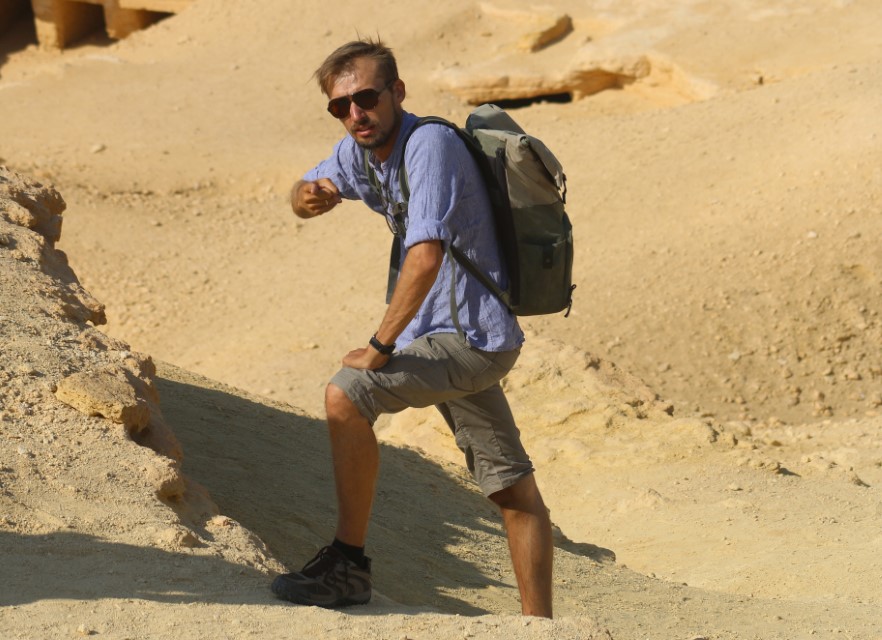-
Principal Investigator: Dr. Mariusz Gwiazda
Contact: m.gwiazda2@uw.edu.pl

Project term:
June 2017 to June 2019
Budget:
PLN 132 718
Funding:
National Science Centre Poland, Preludium 11, 2016/21/N/HS3/00040

-

End of the tradition of chamber tombs as an indication of cultural change among the inhabitants of Syro-Palestine in the Roman period
Keywords: Chamber tombs, Roman period, early Byzantine period, burial habits, Palestine, Phoenicia, Jordan, Syria
The aim of the research is to obtain new information on the history of funerary architecture and cultural changes that occurred among the inhabitants of Syro-Palestine in the Roman period. Chamber tombs – built or rock-hewn structures accommodating family burials – have been chosen as the subject of the study. Tombs of this type became extremely popular in the Roman period. Their popularity is indicated by their number, amounting to several thousands, and their wide distribution in all of the Roman provinces in Syro-Palestine. We need to observe that chamber tombs became an important feature of the landscape surrounding cities and villages. Therefore, the question when and why these monuments ceased to be founded concerns a consequential change in material and spiritual culture of the Phoenicians, Aramaeans, Jews, and Arabs living in the region.
The principal research hypothesis assumes that the change in funerary tradition took place in the Late Roman period, as suggested by my earlier studies in sepulchral architecture. This period witnessed important transformations which until now have been discussed mostly as part of studies concerning urban development and the evolution of civic institutions. Such an approach, however, suffers from serious limitations imposed by the scanty source base. The proposed research offers a new approach to studies of change in the Late Roman culture, taking as its basis a numerous group of monuments which provide us with solid evidence, but so far have not received scholarly attention. Moreover, their occurrence in both urban and rural territories broadens the scope of earlier discussions.
In order to test the hypothesis about the disappearance of chamber tombs, a critical analysis will be undertaken having regard to all published monuments of this type in Syro-Palestine dated between the first century BC and the sixth century AD. The aim of the analysis will be to demonstrate that the number of such foundations decreased in the Late Roman period. The second stage of research will be focused on explaining this change. The analysis will take into account such factors as the Christianisation of the inhabitants of Syro-Palestine, which led to partial change in material culture; the influence of political events, which often influenced the history of sepulchral architecture in different places in the Mediterranean region; or the deteriorating economic situation of the inhabitants of the Roman Empire in Late Antiquity.
A study devoted to the problem of disappearance of chamber tombs – one of the most distinctive elements of the material culture of Roman Syro-Palestine – is in itself an important undertaking. However, the significance of such investigation should be considered, first and foremost, in the broad context of the discussion of cultural change at the end of Antiquity.
Associated events:Lectures and conference presentations:Project bibliography:
2023 Gwiazda, M., The Decline of Communal Tombs and the Byzantine-Islamic Transition in Palaestina Prima/Jund Filasṭīn. Revue Biblique, vol. 130, issue 3, 418-439 doi: 10.2143/RBI.130.3.32917592022 Gwiazda, M., Burial practices in early Byzantine Syro-Palestine (4th–7th centuries CE) – review article. Polish Archaeology in the Mediterranean 31, 287-331 doi:10.31338/uw.2083-537X.pam31.2.01
Links
